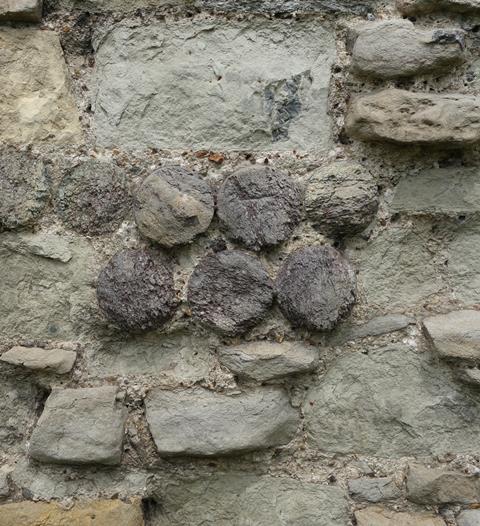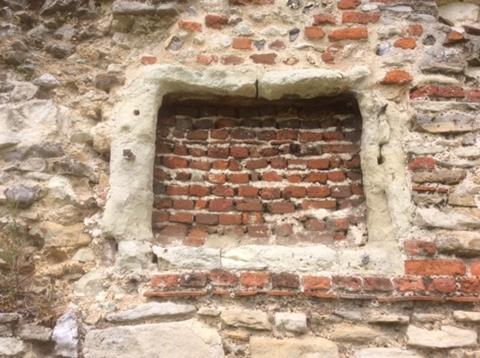A building’s history is often hidden in plain sight for those with eyes to see. But occasionally a more intimate glimpse is briefly exposed

I am very partial to remnants. A remnant is not exactly a ruin. A ruin, such as the tragic abandoned Catholic seminary, St Peter’s Cardross, will continue to evoke its past and, inevitably from now on, something of the failed and valiant hopes for its future. The passage of time – not much time – and the marks of its use – not much use, either – are all written on to the ghostly segments of structure, a great concrete leviathan in the undergrowth. It is a kind of Glaswegian Mayan ruin.
Remnants are more particular, suggestions of something known or unknown. They are frequently transitory: the stripping back of an ordinary house, laid bare to all eyes for a week or two, before the works goes on, to demolish or obscure the detail or the structure in question.
In my teens I remember catching sight of a sequence of exquisite iron fire baskets, temporarily exposed on a flank wall on the west side of Portman Square, their chequered arrangement indicating the journey of a dense collection of Georgian flues within that wall. The next time I passed, all was gone; a crass hotel on the site. Those houses were probably unprotected, too early for conservation area status, maybe unlisted and their demolition unrecorded.

With phones and tablets to hand, almost nothing now goes unrecorded. Ghost signs of vanished businesses and defunct enterprises populate innumerable Instagram accounts and generate avalanches of retweets, gaining value as they become ever more widely known.
But my own preference is for that quick last airing of a domestic interior, baring its wallpapers, fireplaces and the residue of unknown lives, a serendipitous exhibit for no more than a moment; there yesterday, gone today.
Where a building and its site have had complex histories, the remnants take on their own identity, offering those invaluable clues to rebuilding, the traces of ingenuity or simply the practicality of people at the time.

Waltham Abbey, a quiet surviving Essex miracle, just off the M25, presides over extensive abbey gardens. The generous setting is threaded by the remnants of earlier versions of a grand establishment, from a half-ruined abbey gate by the River Lea to long runs of walls, built of anything and everything, stretching many times the length and extent of the existing church. A stone window embrasure has been bricked-up within one stretch of wall, or elsewhere the texture of a random stone wall turns out to be randomly punctuated by slices of Purbeck stone columns, taken from some earlier variant of the abbey, now bedded into the same rough mortar as everything else. On the eastern elevation of the church itself, there is even a little patch of herring-bone Saxon masonry.

This site, on which no fewer than five churches have stood, ranging from a modest timber structure from the 7th century to something approaching the scale of Canterbury Cathedral in the 13th century, and where King Harold is thought to have been brought for burial after the Battle of Hastings, is there to be read, item by item, but rarely with any degree of certainty.
But for me it is that relative randomness that adds to the pleasure. The current church, itself a remnant of everything that went before it, fell a victim to the Dissolution and subsequent demolitions and is now presiding over a jigsaw puzzle of a site. Discreetly presented, the evidence is there for anyone with an iota of curiosity and open eyes.
















1 Readers' comment